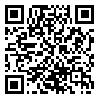Volume 4, Issue 2 (6-2013)
jdc 2013, 4(2): 84-91 |
Back to browse issues page
Download citation:
BibTeX | RIS | EndNote | Medlars | ProCite | Reference Manager | RefWorks
Send citation to:



BibTeX | RIS | EndNote | Medlars | ProCite | Reference Manager | RefWorks
Send citation to:
Esmaeili, MD N, Halaji, MD Z, Ehsani, MD A, Eghbalian, MD M, Karimi A. Oral sulfasalazine in the treatment of patients with refractory alopecia areata. jdc 2013; 4 (2) :84-91
URL: http://jdc.tums.ac.ir/article-1-5033-en.html
URL: http://jdc.tums.ac.ir/article-1-5033-en.html
Nafiseh Esmaeili, MD 
 , Zahra Halaji, MD
, Zahra Halaji, MD 
 , Amirhooshang Ehsani, MD
, Amirhooshang Ehsani, MD 
 , Mahboubeh Eghbalian, MD
, Mahboubeh Eghbalian, MD 
 , Abbas Karimi *
, Abbas Karimi * 
 1
1

 , Zahra Halaji, MD
, Zahra Halaji, MD 
 , Amirhooshang Ehsani, MD
, Amirhooshang Ehsani, MD 
 , Mahboubeh Eghbalian, MD
, Mahboubeh Eghbalian, MD 
 , Abbas Karimi *
, Abbas Karimi * 
 1
1
1- , a-karimi@razi.tums.ac.ir
Abstract: (15182 Views)
Background and Aim: Alopecia Areata is a chronic inflammatory disease which involves hair follicles. The aim of this study was to assess the efficacy of oral sulfasalazine in the treatment of recalcitrant alopecia areata.
Methods: Patients with refractory alopecia areata who were eligible for the study, after providing informed consent were treated with oral sulfasalazine for 6 months. After completion of treatment, regrowth of vellus and terminal hairs were determined based on clinical examination and comparing the new photographs with the baseline ones.
Results: Sixteen patients were enrolled in the present study but only 5 patients completed it. No response was seen in 3 patients. After 4 months, 55-60% response to treatment was observed in 1 patient, but the disease relapsed at the end of fourth month. In 1 patient, 15% hair regrowth was observed but treatment was discontinued after the second month due to side effects. Side effects were observed in 2 patients.
Conclusion: Since only refractory alopecia areata patients had been enrolled to the study, the results could not be generalized to all patients with alopecia areata. Therapeutic response in the patients with alopecia areata is disappointing and any poor treatment response or failure of treatment in refractory cases of the disease cannot rule out the efficacy of the drug in the milder forms of the alopecia areata.
Methods: Patients with refractory alopecia areata who were eligible for the study, after providing informed consent were treated with oral sulfasalazine for 6 months. After completion of treatment, regrowth of vellus and terminal hairs were determined based on clinical examination and comparing the new photographs with the baseline ones.
Results: Sixteen patients were enrolled in the present study but only 5 patients completed it. No response was seen in 3 patients. After 4 months, 55-60% response to treatment was observed in 1 patient, but the disease relapsed at the end of fourth month. In 1 patient, 15% hair regrowth was observed but treatment was discontinued after the second month due to side effects. Side effects were observed in 2 patients.
Conclusion: Since only refractory alopecia areata patients had been enrolled to the study, the results could not be generalized to all patients with alopecia areata. Therapeutic response in the patients with alopecia areata is disappointing and any poor treatment response or failure of treatment in refractory cases of the disease cannot rule out the efficacy of the drug in the milder forms of the alopecia areata.
Type of Study: Research |
Subject:
Special
Received: 2013/06/26 | Accepted: 2013/08/5 | Published: 2013/09/21
Received: 2013/06/26 | Accepted: 2013/08/5 | Published: 2013/09/21
Send email to the article author
| Rights and permissions | |
 |
This work is licensed under a Creative Commons Attribution-NonCommercial 4.0 International License. |



